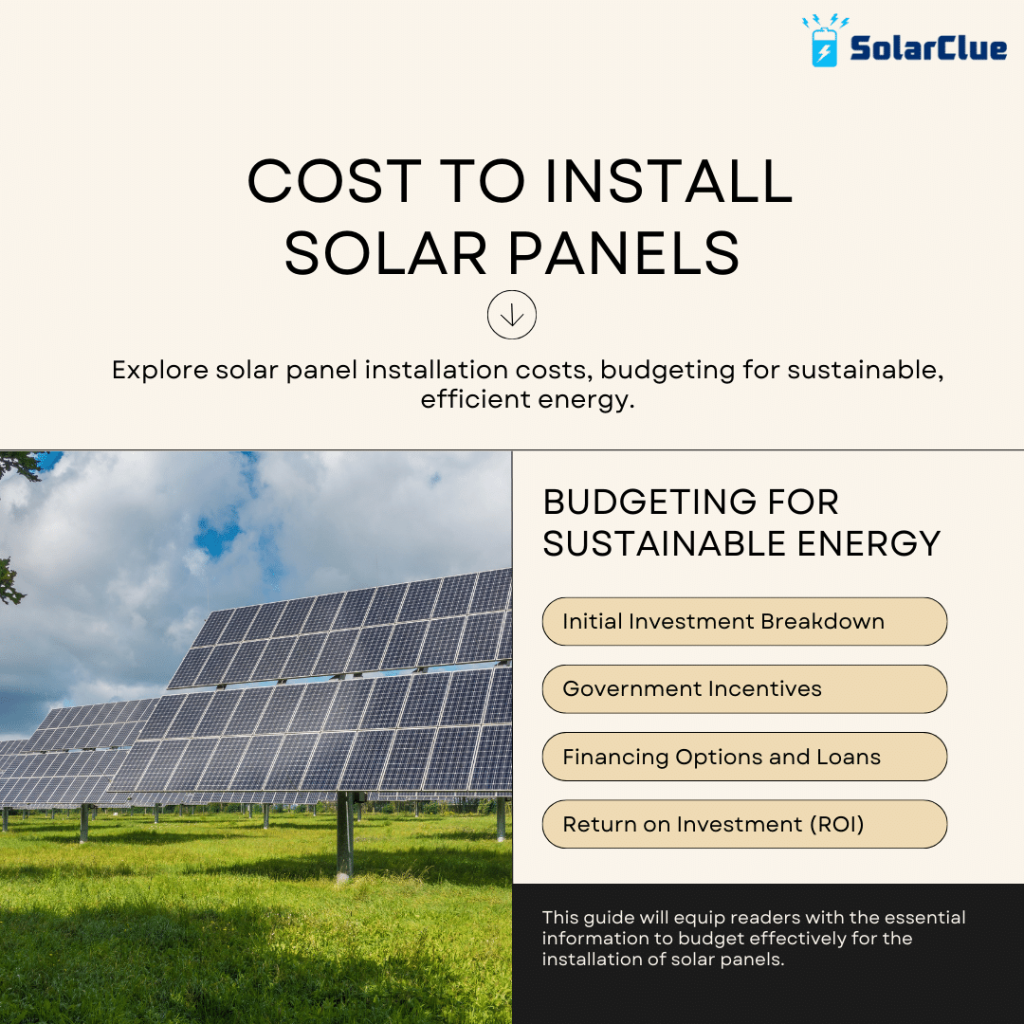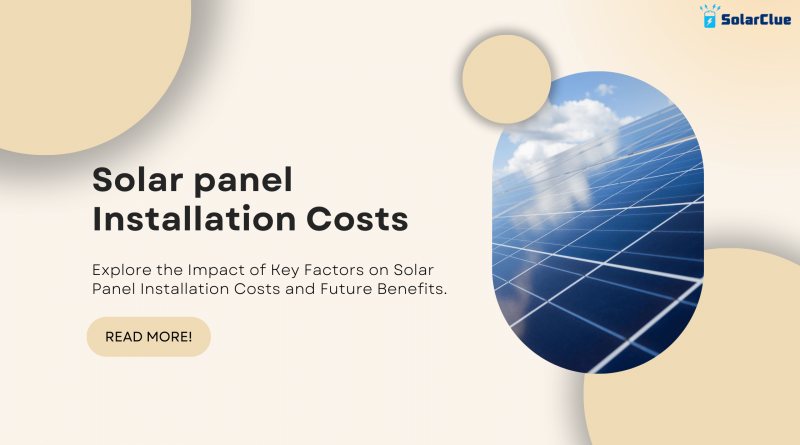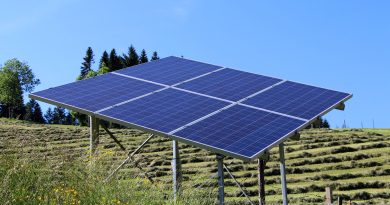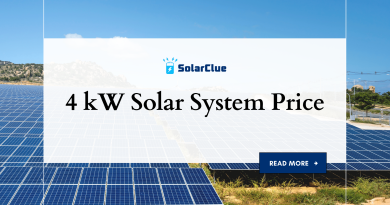Solar Panel Installation Cost Guide: Exploring Costs
Solar energy is revolutionizing the way we power our homes, offering a sustainable and cost-efficient alternative. In this Solar Panel Installation Cost Guide, we break down the expenses and considerations, ensuring you make an informed decision for a brighter, eco-friendly future.
Understanding the Basics: What Influences Solar Panel Installation Costs
Embarking on the journey towards sustainable energy with solar panels involves a nuanced understanding of the factors influencing installation costs. In “Understanding the Basics: What Influences Solar Panel Installation Costs,” we unravel the essential components shaping the financial landscape of solar energy adoption. From the size of your system to the quality of components, geographical considerations, and the condition of your roof – each element plays a pivotal role in determining the overall cost of installing solar panels. Join us as we delve into the intricacies of these factors, empowering you with the knowledge needed to make informed decisions on your path to a greener and more energy-efficient future.
1. System Size Matters:
The size of your solar energy system directly impacts the installation cost. Larger systems generate more power but come with a higher upfront investment. However, the long-term savings often outweigh the initial expense.
2. Quality Components for Optimal Performance:
Investing in high-quality solar panels and supporting equipment may increase the upfront cost. Nevertheless, superior components ensure efficiency, durability, and maximum energy production, proving to be a smart investment in the long run.
3. Location:
Geographical location plays a pivotal role in solar panel efficiency. Areas with abundant sunlight result in better energy production. Additionally, installation costs can fluctuate based on local regulations and permits.
4. Roof Condition and Orientation:
The condition and orientation of your roof impact installation complexity. A sturdy, well-oriented roof can streamline the process, while modifications or repairs may incur additional costs.
The Nuts and Bolts: Breaking Down Solar Panel Installation Cost Guide
Embarking on the journey towards sustainable energy with solar panels involves a comprehensive understanding of the financial aspects involved. In “The Nuts and Bolts: Breaking Down Solar Panel Installation Cost Guide,” we dissect the various components that contribute to the overall cost of installing solar panels. From upfront expenditures, labor costs, permitting and inspection fees, to ongoing maintenance and potential repairs – each element plays a crucial role in shaping the financial landscape of solar energy adoption. Join us as we unravel the intricacies of these expenses, providing you with valuable insights to navigate the financial terrain and make well-informed decisions on your path to a greener and more energy-efficient future.
1. Upfront Costs
The initial investment involves purchasing solar panels, inverters, mounting equipment, and other essential components. While this may seem substantial, government incentives and rebates can significantly offset these costs.
2. Labor Costs
Professional installation ensures optimal performance. Skilled labor comes at a price, but the expertise and precision they bring to the table are indispensable for a seamlessly integrated solar system.
3. Permitting and Inspection Fees
Navigating local regulations demands proper permits and inspections. Factor in these fees when budgeting for your solar panel installation to avoid surprises.
4. Maintenance and Repairs
Although solar panels are low-maintenance, occasional check-ups are essential. Budget for potential repairs or maintenance to keep your system running smoothly for years to come.
Maximizing ROI: Long-Term Benefits of Solar Panel Installation
1. Energy Independence
Harnessing solar power grants you independence from fluctuating energy prices, offering stability and control over your electricity costs.
2. Environmental Impact
Reducing your carbon footprint is a compelling reason to embrace solar energy. It’s a proactive step toward a sustainable future, contributing to a cleaner environment.
3. Financial Savings
While the upfront costs may seem daunting, the long-term savings on your energy bills make solar panel installation a financially savvy decision. Many homeowners experience a return on investment within a few years.
Navigating Solar Power: Is Solar Panel Installation Right for Your Home?

Considering solar panel installation for your home involves a careful evaluation of your energy needs, location, and long-term goals. Start by assessing your household’s energy consumption and calculating the potential return on investment. Understanding the sunlight exposure in your area and researching local regulations and incentives are crucial steps. If your location receives ample sunlight and offers favorable policies, solar panels can significantly reduce your carbon footprint while providing long-term financial benefits. Embracing solar power is not just a decision; it’s a commitment to a greener planet. Make an informed choice that aligns with your values and goals, contributing to a sustainable and cost-efficient energy future.
Conclusion
Ready to take the leap into solar energy? Look no further than SolarClue®, your trusted partner in sustainable power solutions. Our experts guide you through every step, ensuring a seamless transition to cleaner, more affordable energy.
Contact SolarClue® today and illuminate your path to a brighter, eco-friendly future.
Frequently Asked Questions
The cost is influenced by factors like system size, location, equipment quality, and installation complexity.
Yes, various governments offer incentives, tax credits, and rebates to make solar installations more affordable.
Consider factors like energy savings, local electricity rates, and available incentives to calculate ROI.
Yes, the choice of solar panel type, such as monocrystalline or polycrystalline, can impact installation costs.
Many financing options, including loans and leasing, can make solar panel installations more accessible.
Solar panels generally have low maintenance costs, mainly cleaning and occasional inspections.
Solar installation costs vary based on geographical factors like sunlight availability and local labor rates.
While it’s possible, professional installation ensures safety, compliance, and optimal performance.
Focus on comprehensive warranties covering equipment, performance, and workmanship for added protection.
Consider potential costs like maintenance, monitoring systems, and inverter replacements over the system’s lifespan.



